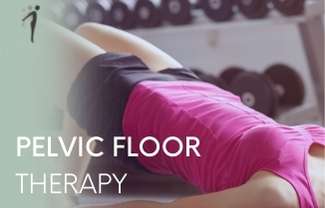Pregnancy Pilates
Pregnant pilates are exercises that should be started after the 14th week of pregnancy.
Pregnancy Pilates
Pregnant pilates are exercises that should be started after the 14th week of pregnancy.
Pregnancy Pilates
Pregnant pilates are exercises that should be started after the 14th week of pregnancy. It is recommended to start after the 14th week with the permission of the doctor, as it will be dangerous in terms of holding the baby to the uterus and placenta if it is done before the 14th week.
It is sufficient to make pregnancy pilates exercises 3 days a week, in periods of 30-45 minutes a day. When the exercises are just started, it is expected that the expectant mother will get used to the movements and increase her endurance with shorter work-out schedules.
Expectant mothers do not only experience hormonal changes during pregnancy. Some discomfort may occur when the body weights of expectant mothers experiencing physical changes are concentrated in a certain area. At this point, it is recommended to do pilates during pregnancy. Because it will be possible with pilates to prevent these pains before the low back and back pains become unbearable. These pressures, which will negatively affect your daily life, cause problems such as prolapse in the muscles of the pelvic floor.
Benefits of Pregnancy Pilates
Pregnany pilates to be done with doctor’s permission and under control during pregnancy has many benefits. According to researches;
- It has been observed that the nervous system, internal organ functions, respiratory system and heartbeat of the babies of mothers who do Pilates work better than other babies.
- If a normal birth process is foreseen, pregnancy pilates facilitates the birth.
- The problem of urinary incontinence is eliminated.
- It regulates sleep.
- It facilitates the recovery of the abdominal muscles after birth.
- The pregnant woman feels more vigorous, happy and fit and becomes motivated until the birth.
- By increasing flexibility in the muscles, it reduces the risk of tearing in the muscles during childbirth.
- It strengthens your lower back and back muscles.
- It makes your breastfeeding process more comfortable.
- It increases blood circulation.
1. Pilates in the 1st Trimester Period
The first trimester of pregnancy is considered the riskiest period. Those who will start doing pilates during this period should definitely get their doctor’s permission. Pregnant women who do not have exercise habits should be evaluated by a physiotherapist after doctor’s permission.
Movements need to be slowed down and your body’s signals need to be listened to. During this period, due to the increase in the relaxin hormone, relaxation occurs in the joints, and exercises that will force the joints should be avoided. As the baby starts to grow, the balance center of the body of the expectant mothers begins to change with the hormonal changes. Pregnant women who are new to Pilates can use support bars to balance.
2. Pilates in the 2nd Trimester Period
In the period between the 3rd and 6th months of pregnancy, pregnant women are in the most comfortable period. In this process, exercises for the abdominal muscles and pelvic floor can be started. Supports such as small pilates balls can be used during the exercises.
During this period when your baby starts to grow and his/her weight is felt, the changes in your body increase. Low back and back pains can also start in this process. It should be avoided from overstrained movements.
3.Pilates in the 3rd Trimester Period
In the last 3 months of the pregnancy period, exercises that will facilitate childbirth are emphasized.
1. Pilates in the 1st Trimester Period
We plan pilates classes in the presence of physiotherapists specialized in this field for pregnant women who do not have a miscarriage risk and have doctor’s permission. We prepare pregnant women for birth in the most comfortable way.
WE WILL CALL YOU!
Leave your information, we will call you as soon as possible for detailed information!












 Pelvic Floor Therapy
Pelvic Floor Therapy




 Türkçe
Türkçe English
English Русский
Русский